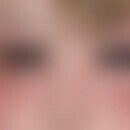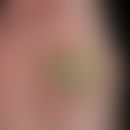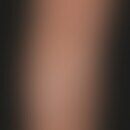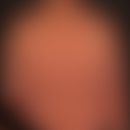Synonym(s)
DefinitionThis section has been translated automatically.
Test for the diagnosis of a late type reaction(type IV reaction) caused by photoallergic and/or phototoxic substances which are applied to the skin of the back under standardised conditions using Finn chambers. Modified methods are the photoscratch and the photoprint test.
ImplementationThis section has been translated automatically.
In principle, the usual requirements apply to the photopatch test as for the unexposed epicutaneous test. The tests are carried out on clinically healthy (if possible, not -intensively - pre-tanned skin; for many reasons this is best on the back, alternatively on the skin of the buttocks).
24 hours after occlusive application of the potential photoallergens, the test area is irradiated with a standard UVA dose of 5 J/cm2 (spectrum 320-400 nm). The test reactions are evaluated immediately and 24, 48, 72 and 96 hours after irradiation according to the criteria of the epicutaneous test. For control purposes, an unexposed epicutaneous test is performed in parallel with the same substances. An example of a standard series of relevant test substances is the substance list of the DDG working group on photopatent testing, see table (Note: This test series does not include drugs which only form the actual photoallergen through systemic metabolism. The proof of such a systemic sensitization can only be provided by a systemic photo-provocation).
- Phototoxic reaction: Erythema and infiltrate immediately or delayed as decrescent reaction.
- Photoallergic reaction: Erythema and infiltrate, papulovesicles, blisters or erosions delayed as a crescendo reaction.
In the photoscratch or photo print test, the stratum corneum is first perforated with a lancet and then the test substance is applied.
To exclude false test results, which can be caused by systemically applied drugs, a so-called systemic photoprovocation (SPP) can be performed. Here, an area of skin is irradiated with 10 J/cm2 UVA, followed by the systemic application of the corresponding drug. At the time of the highest plasma concentration another area is irradiated with 10 J/cm2.
After reading, it is important to evaluate the clinical relevance. This can be done systematically according to the so-called COADEX index.
- C (current): current clinical relevance. The patient was exposed to the allergen and now presents with clinical symptoms, which will however improve when the allergen is removed.
- O (old): past clinical relevance. The patient has been exposed to the allergen in the past and developed clinical symptoms, but these are not present.
- A (active): active sensitization currently present.
- D (do not know): relevance remains unclear.
- EX (exposed): history of allergen exposure with no clinical symptoms or no history of allergen exposure with positive type IV sensitisation in the epicutaneous test.
You might also be interested in
Note(s)This section has been translated automatically.
LiteratureThis section has been translated automatically.
- Bourke J et al (2001) Guidelines for care of contact dermatitis. Br J Dermatol 145: 877-885
- Bruynzeel DP et al (2004) Photopatch testing: a consensus methodology for Europe. J Eur Acad Dermatol Venereol 18: 679-682
- Gao L et al (2014) Retrospective study of photopatch testing in a Chinese population during a 7-year period. dermatitis 25: 22-26
- Gonçalo M et al (2013) Photopatch testing: recommendations for a European photopatch test baseline series. Contact Dermatitis 68: 239-243
- Hölzle E, Rowold J, Peper S, Plewig G (1989) The exposed epicutaneous test. Allergology 12: 13-20
- Hölzle E et al (1991) Photopatch-Test: Results of the multicenter study. Act. Dermatol. 17: 117-123
- Neumann NJ et al (2000) Photodiagnostic test methods. 1: Stepwise light exposure and the photopatch test. dermatologist 51: 113-125
- Neumann NJ et al (2003) The photopatch test procedure of the German, Austrian, and Swiss photopatch test group. Photodermatol Photoimmunol Photomed 19: 8-10
- Rünger TM et al (1995) Recommendations for a photo-patch test standard series by the German speaking study group "Photopatch-Test". dermatologist 46: 240-243
- Warshaw EM et al (2002) Prevalence of patch testing and methodology of dermatologists in the US: results of a cross-sectional survey. At J Contact Dermat 13: 53-58
TablesThis section has been translated automatically.
Substance list photo patch test (DDG recommendations)
Substances |
Test penetration |
1. tetrachlorosalicylanilide |
0,1% |
2. 5-bom-4'-chlorosalicylanilide |
1,0% |
| 1,0% | |
| 1,0% | |
5. sulfanilamide |
5,0% |
| 0,1% | |
7. quinidine sulphate |
1,0% |
8. musk ambrette |
5,0% |
| 8,0% | |
10. 4-aminobenzoic acid |
10,0% |
11. 2-ethylhexyl-4-4-dimethylaminobenzoate |
10,0% |
12. 1-(4-isopropylphenal)-3-phenyl-1,3-propanedione |
10,0% |
| 13. butyl methoxydibenzoylmethanes | 10,0% |
| 14. isoamyl-4-methoxycinnamate | 10,0% |
| 15. ethylhexyl methoxycinnamate | 10,0% |
| 16. 3-(4-methylbenzylidene) camphor | 10,0% |
| 17. 2-phenyl-5-benzimidazole sulfonic acid | 10,0% |
18. 2-Hydroxy-4-Methoxybenzophenone (Oxybenzonum) |
10,0% |
19. sulisobenzonum |
10,0% |




